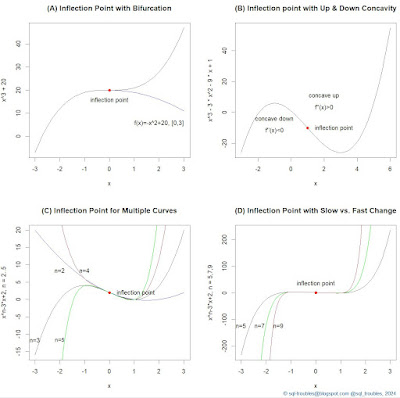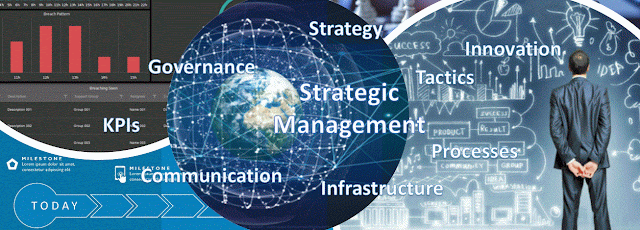 |
| Strategic Management Series |
"Data mesh is what comes after an inflection point, shifting our approach, attitude, and technology toward data. Mathematically, an inflection point is a magic moment at which a curve stops bending one way and starts curving in the other direction. It’s a point that the old picture dissolves, giving way to a new one. [...] The impacts affect business agility, the ability to get value from data, and resilience to change. In the center is the inflection point, where we have a choice to make: to continue with our existing approach and, at best, reach a plateau of impact or take the data mesh approach with the promise of reaching new heights." [1]
I tried to understand the "metaphor" behind the quote. As the author through another quote pinpoints, the metaphor is borrowed from Andrew Groove:
"An inflection point occurs where the old strategic picture dissolves and gives way to the new, allowing the business to ascend to new heights. However, if you don’t navigate your way through an inflection point, you go through a peak and after the peak the business declines. [...] Put another way, a strategic inflection point is when the balance of forces shifts from the old structure, from the old ways of doing business and the old ways of competing, to the new." [2]
The second part of the quote clarifies the role of the inflection point - the shift from a structure, respectively organization or system to a new one. The inflection point is not when we take a decision, but when the decision we took, and the impact shifts the balance. If the data mesh comes after the inflection point (see A), then there must be some kind of causality that converges uniquely toward the data mesh, which is questionable, if not illogical. A data mesh eventually makes sense after organizations reached a certain scale and thus is likely improbable to be adopted by small to medium businesses. Even for large organizations the data mesh may not be a viable solution if it doesn't have a proven record of success.
I could understand if the author would have said that the data mesh will lead to an inflection point after its adoption, as is the case of transformative/disruptive technologies. Unfortunately, the tracking record of BI and Data Analytics projects doesn't give many hopes for such a magical moment to happen. Probably, becoming a data-driven organization could have such an effect, though for many organizations the effects are still far from expectations.
There's another point to consider. A curve with inflection points can contain up and down concavities (see B) or there can be multiple curves passing through an inflection point (see C) and the continuation can be on any of the curves.
 |
| Examples of Inflection Points [3] |
The change can be fast or slow (see D), and in the latter it may take a long time for change to be perceived. Also [2] notes that the perception that something changed can happen in stages. Moreover, the inflection point can be only local and doesn't describe the future evolution of the curve, which to say that the curve can change the trajectory shortly after that. It happens in business processes and policy implementations that after a change was made in extremis to alleviate an issue a slight improvement is recognized after which the performance decays sharply. It's the case of situations in which the symptoms and not the root causes were addressed.
More appropriate to describe the change would be a tipping point, which can be defined as a critical threshold beyond which a system (the organization) reorganizes/changes, often abruptly and/or irreversible.
Previous Post <<||>> Next Post
References:
[1] Zhamak Dehghani (2021) Data Mesh: Delivering Data-Driven Value at Scale (book review)
[2] Andrew S Grove (1988) "Only the Paranoid Survive: How to Exploit the Crisis Points that Challenge Every Company and Career"
[3] SQL Troubles (2024) R Language: Drawing Function Plots (Part II - Basic Curves & Inflection Points) (link)








